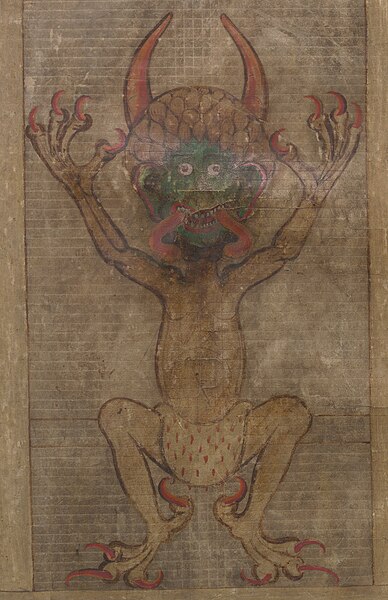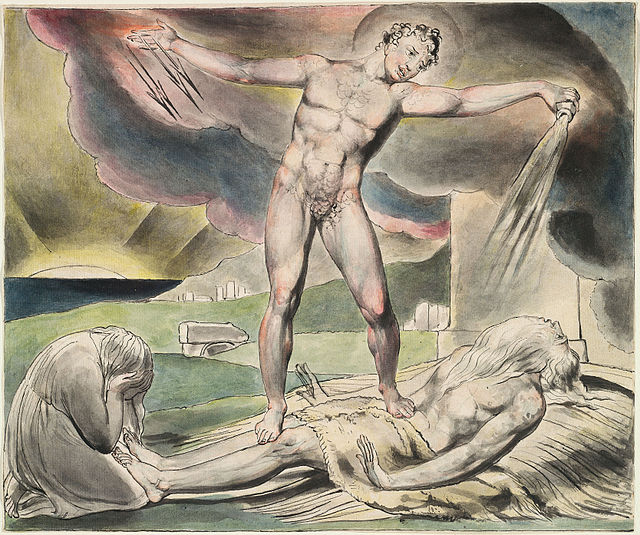Theistic Satanism, otherwise referred to as religious Satanism, spiritual Satanism, or traditional Satanism, is an umbrella term for religious groups that consider Satan, the Devil, to objectively exist as a deity, supernatural entity, or spiritual being worthy of worship or reverence, whom individuals may contact and convene with. This is in contrast with the atheistic archetype, metaphor, or symbol found in LaVeyan Satanism, who sometimes dismiss Theistic Satanist worship of devils as a "Christian heresy".
Illustration by Martin van Maële of a Witches' Sabbath from the 1911 edition of La Sorciere, written by Jules Michelet.
The Fallen Angel (1847) by Alexandre Cabanel
Witches' Sabbath (1798) by Francisco Goya, depicting the devil in the form of a garlanded goat.
The American serial killer Richard Ramirez self-identified as a Satanist.
Satan, also known as the Devil, and sometimes also called Lucifer in Christianity, is an entity in Abrahamic religions that seduces humans into sin or falsehood. In Judaism, Satan is seen as an agent subservient to God, typically regarded as a metaphor for the yetzer hara, or "evil inclination". In Christianity and Islam, he is usually seen as a fallen angel or jinn who has rebelled against God, who nevertheless allows him temporary power over the fallen world and a host of demons. In the Quran, Shaitan, also known as Iblis, is an entity made of fire who was cast out of Heaven because he refused to bow before the newly created Adam and incites humans to sin by infecting their minds with waswās.
Illustration of the Devil on folio 290 recto of the Latin, Bohemian Codex Gigas, dating to the early thirteenth century
Balaam and the Angel (1836) by Gustav Jäger. The angel in this incident is referred to as a "satan".
The Examination of Job (c. 1821) by William Blake
The sound of a shofar (pictured) is believed to symbolically confuse Satan.








